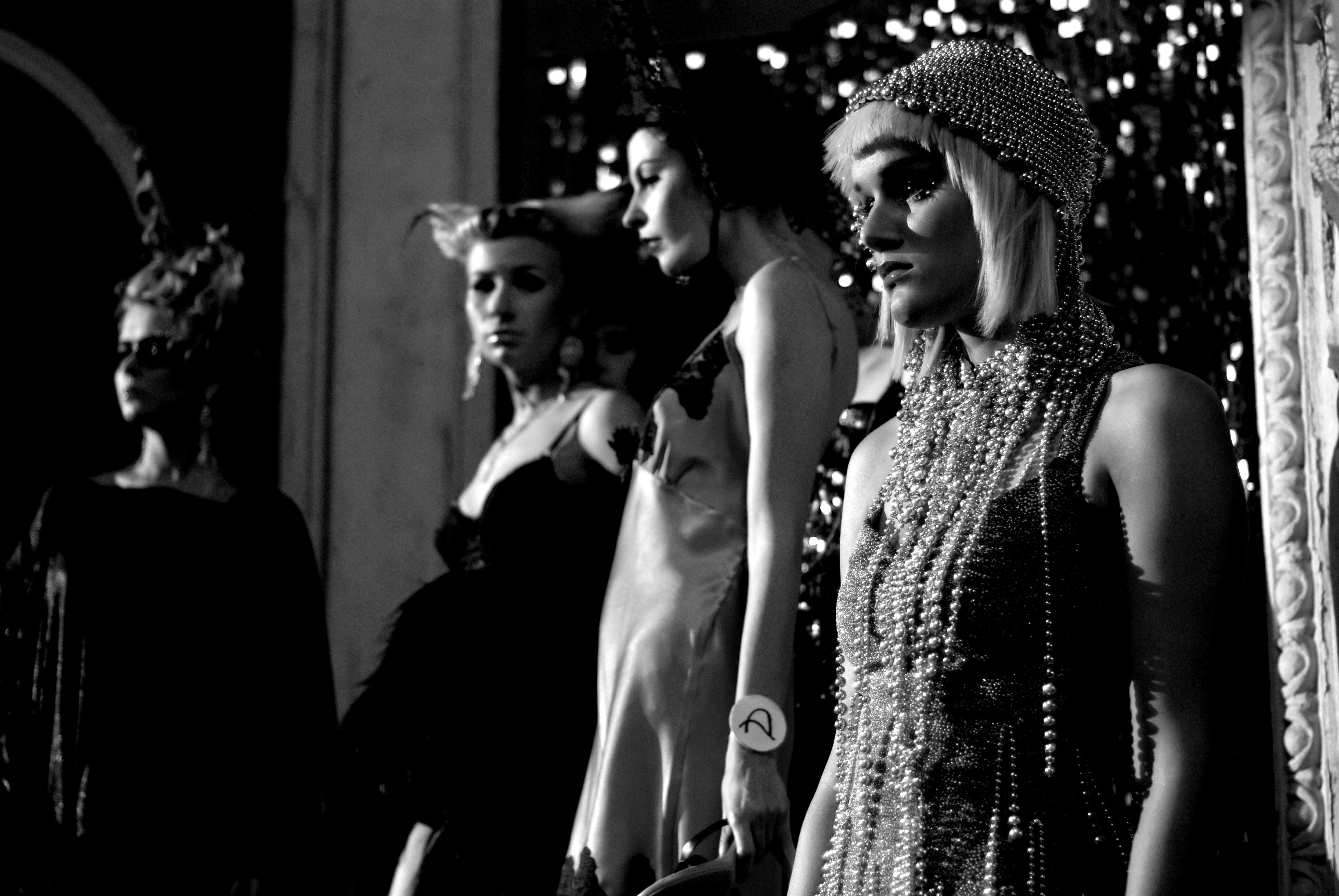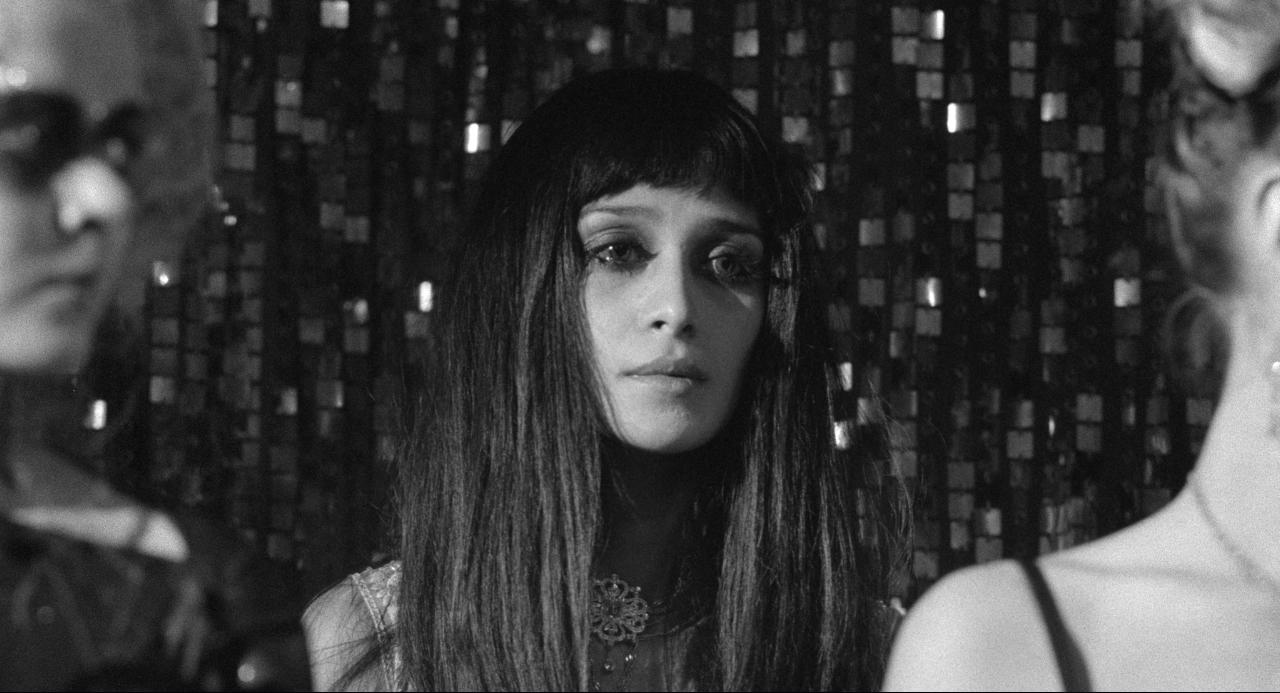10.2.2010 Carl-Dag Lige
 St.Tony (Taavi Eelmaa)
St.Tony (Taavi Eelmaa)
Estonian director Veiko Õunpuu has recently finished his third feature film “Püha Tõnu kiusamine” (“The Temptation of St. Tony”, Estonia-Sweden-Finland, Homeless Bob Productions, 2009). The black-and-white film had its premiere in October 2009 and has received controversial reception during the last months. As for the script, Õunpuu received the European Talent Award at the Cannes International Film Festval in 2008, while Estonian Film Critique’s Association awarded it as the best Estonian feature film of 2009. To mention further recognition, “The Temptation of St. Tony” was selected in the Sundance Film Festival (USA) and will be screened in Rotterdam’s (The Netherlands) and Gothenburg’s (Sweden) festivals. Reception among wider audience has not been as embracing, Õunpuu’s work has been criticized by animal-activists who protested against the use of dead dogs in the film.
Õunpuu’s background
Veiko Õunpuu is not a typical film director because he has not received any formal film education. He is a multi-talent who has a professional background in music and painting. He has been a back-packer, a construction worker and via different paths ended up as a film director. His production includes only three films: “Tühirand” (“Empty”, 2006), “Sügisball” (“Autumn Ball”, 2007) and “The Temptation of St. Tony”, these are works that raise high expectations of original productions in the future. “Empty” was a low-budget experimental short-film about the life of young adults in the Soviet Union, while “Autumn Ball” has been considered as Õunpuu’s break-through in local (Estonian) as well as international scene.
The latter has received 15 international prizes, among others the Horizon Award of Venice Film Festival in 2007. “Autumn Ball” is a loose adaption of Estonian writer Mati Unt’s modernist novel “Sügisball” (1979), a story of alienated individuals in contemporary society. Õunpuu’s talent as a screenwriter and director lies in his ability to visualize and re-interpret the anxiety of Unt’s novels, which combine (self-)irony, vanity, egoism, doubts, guilt and loneliness. In “Autumn Ball”, psychologically intense depiction of characters and various visual qualities focuses on the atmosphere and psychological aspects rather than on a strict, logical narrative. Non-linear storytelling is one of the main features, which connects “Autumn Ball” with Õunpuu’s most recent work “The Temptation of St. Tony”.
Tõnu, the Saint of the Everyday
 Tony and the dead dog
Tony and the dead dog
“The Temptation of St.Tony” is a story of a mid-level Estonian manager who suddenly gets strange visions; unexpected things happen to him, as well. Tõnu Ploomipuu, a seemingly typical Estonian man who has a beautiful wife, lovely daughter, new suburban house, expensive car and nice clothes, is an emotionally strained, somewhat naive person with evidently materialistic values. The events start to unfold after the funeral of Tõnu’s father, an occasion, which seems to be a burden and cause of deep sorrow to Tonu. What follows, is a series of fragments from Tõnu’s life – an accidental murder of a dog while driving home from the funeral, a visit to a local police station, discovery of his wife’s betrayal with another man, meeting with a depressed clergyman in a deserted church and a night at a luxurious brothel Das Goldene Zeitalter.
 Das Goldene Zeitalter
Das Goldene Zeitalter
Tõnu seems to be surprised and scared. He does not know why those things happen to him. Step-by-step he becomes aware of the deeper layers and dynamics of his mind and yet, he seems to lack any control of these deep mental processes.
 Natascha
Natascha
One of the strongest characters in “The Temptation of St. Tony” is Natasha, a young Russian-speaking beauty who appears like a mirage in Tõnu’s otherwise depressive reality. Natasha is a promise of happiness, an illusion of unity with the person you (think you) love. Natasha is an escape from reality on the expense of Tõnu’s inner freedom. In Natasha, Õunpuu has depicted a femme fatale who has the keys to Tõnu’s heart as well as to Hell. In order to take care of his father, Natasha has to work in the brothel. Natasha’s desperate situation evokes a hero in Tõnu, but he is not strong enough to save the girl.
Existential depth as the main quality
The whole film is a collage-like puzzle of symbolic fragments. Time does not seem to flow naturally and despite the fact that events take place in real life, the whole atmosphere is stemmed with a static vacuum of anxiety. This illogical “reality” is created by the rhythmic change of symbolic events. Yet, the symbolism of those events is not self-evident and seems in many cases to be influenced by Zen Buddhist practice. I am not aware of Õunpuu’s interest in Eastern philosophy, but in “The Temptation of St. Tony” there are a couple of scenes with Japanese actresses as figures from the space-time of the spirits. Õunpuu’s work is filled with questions, which remain without answer. He seems to emphasize the controversial and dialectical essence of human life and to wonder why particular deeds of our everyday life differ from our conscious beliefs and principles.
 Funeral
Funeral
The main weakness of “The Temptation of St. Tony” as a work of art is its inability to deal with the enormous amount of ideas, connotations and layers it evokes. As mentioned above, the movie is a collage-like work, but in my view, it lacks the space for contemplation. Poetry needs space, but “The Temptation of St. Tony” is a condensed, intellectual essay, which is in desperate need of fresh air. The film presents a load of relatively separate pieces of visual poetry, many of them with a potential of an independent work of art. To put it simple, “The Temptation of St. Tony” is very dense and I felt that I could not breathe enough in order to feel emphaty about the whole work.
Another issue, which gave birth to some doubts in me, are the actors. Most of the characters in “The Temptation of St. Tony” are very dramatic, not to say theatrical. It is well known, that due to its small cinema-scene, Estonia lacks professional film-actors. Theatre actors and actresses play most of the roles in “The Temptation of St. Tony”. The grotesque and theatrical nature of characters might be a result of the director’s intention, but in my view it diminishes the poetic and contemplative depth of the work.
One of the fascinating qualities of “The Temptation of St. Tony” is its cinematography. Mart Taniel is a talented young Estonian cinematographer who has been working with Õunpuu in all of his three movies. Taniel’s camerawork is sensitive and context-oriented. Slow movement of the camera over the landscapes and textures of different surfaces is especially enjoyable. This joy has not only to do with visual pleasure but relates to a deeper appreciation of nature. The ability to pick small details (like the branches of a tree hailing in the wind close to the end of “The Temptation of St. Tony”) and to present them as relevant elements between cinematic events might, in addition to Taniel’s talent, be an indication of Õunpuu’s background as a painter. In several of Õunpuu’s movies, camera focuses (sometimes for several moments) on a random nature or cityscape scene, and turns this pause into an event of its own – these kind of scenes not only function as transition-zones to the following events but act as independent moments with their intrinsic (visual, contemplative e.g.) qualities.
As an artwork, “The Temptation of St. Tony” is an intelligent piece of art, which can be interpreted in multiple ways. The film has several layers of cultural, historic, religious, not to speak of film-historical connotations. In my opinion, existential depth, the plurality of meanings and openness to alternative interpretations are the main qualities of Õunpuu’s work. He proposes questions about the sense of our existence in a visually poetic and disturbingly grotesque way. What does it mean to live ethical life? What is faith? Is religion really so marginal in our lives as it seems to be? What are the circumstances of egoism? How can we communicate with others? All these are questions to which Õunpuu doesn’t have an answer, but is willing to contemplate at. As a director, screenwriter and artist, Õunpuu is remarkable in terms of his trust to share with the wider audience his personal doubts about the meaning of life.
For Mustekala,
Carl-Dag Lige
31.01.2010
Links:
The Temptation of St. Tony (including trailer): www.thetemptationofsttony.com
Autumn Ball: www.sygisball.ee
Veiko Õunpuu:
en.wikipedia.org/wiki/Veiko_%C3%95unpuu